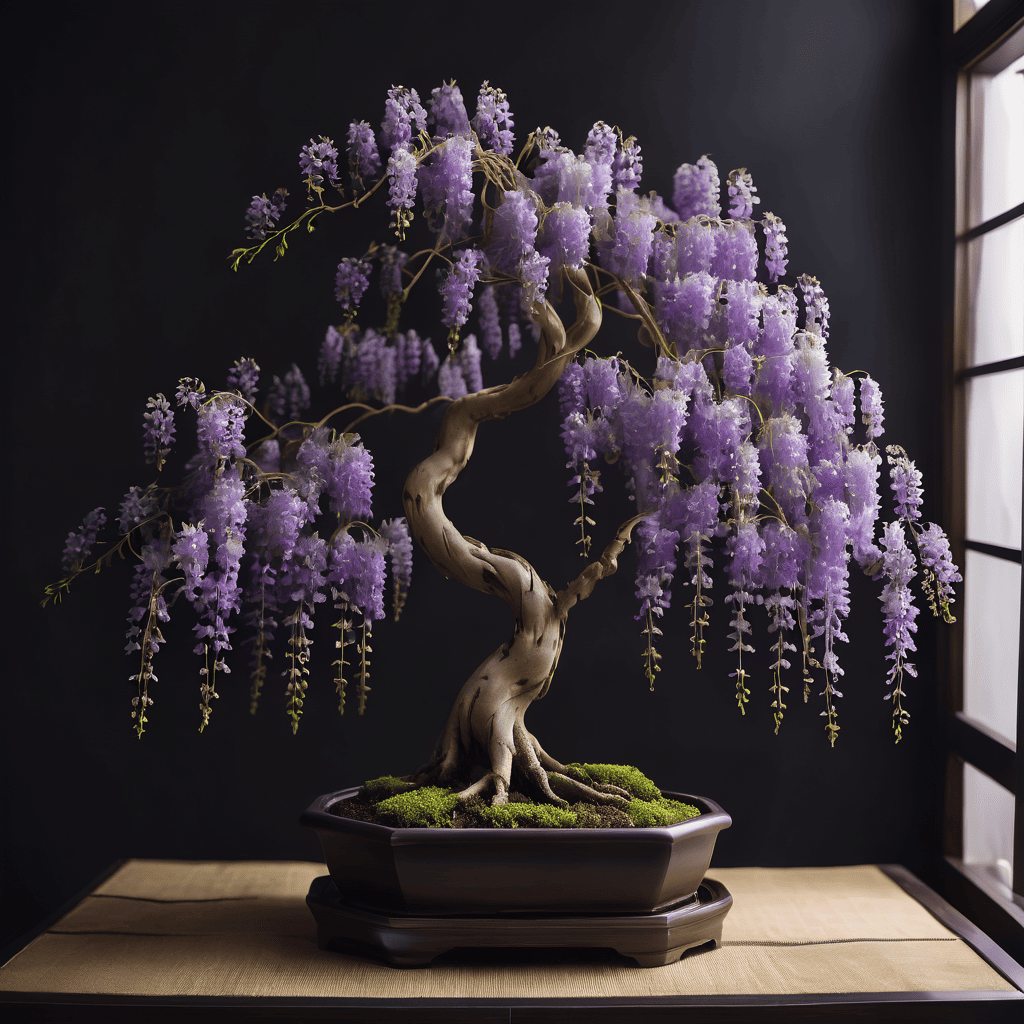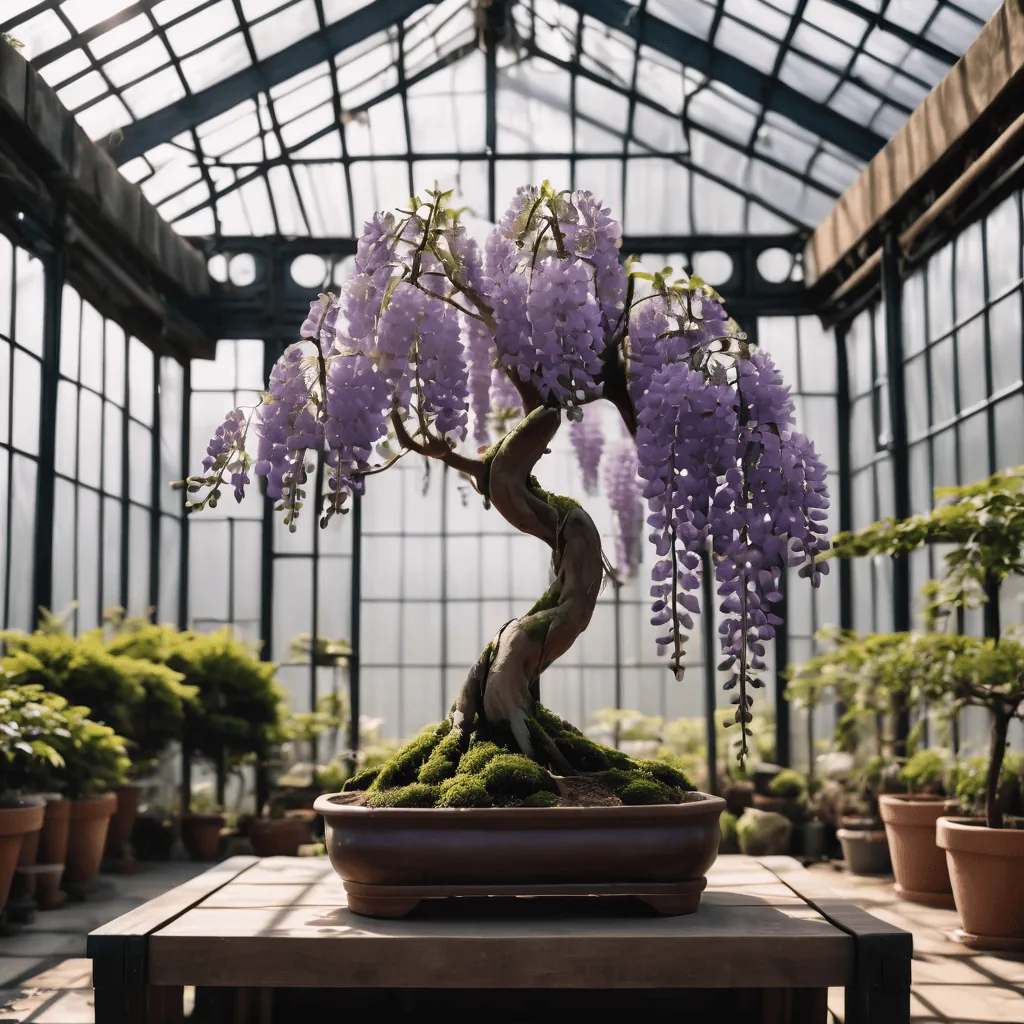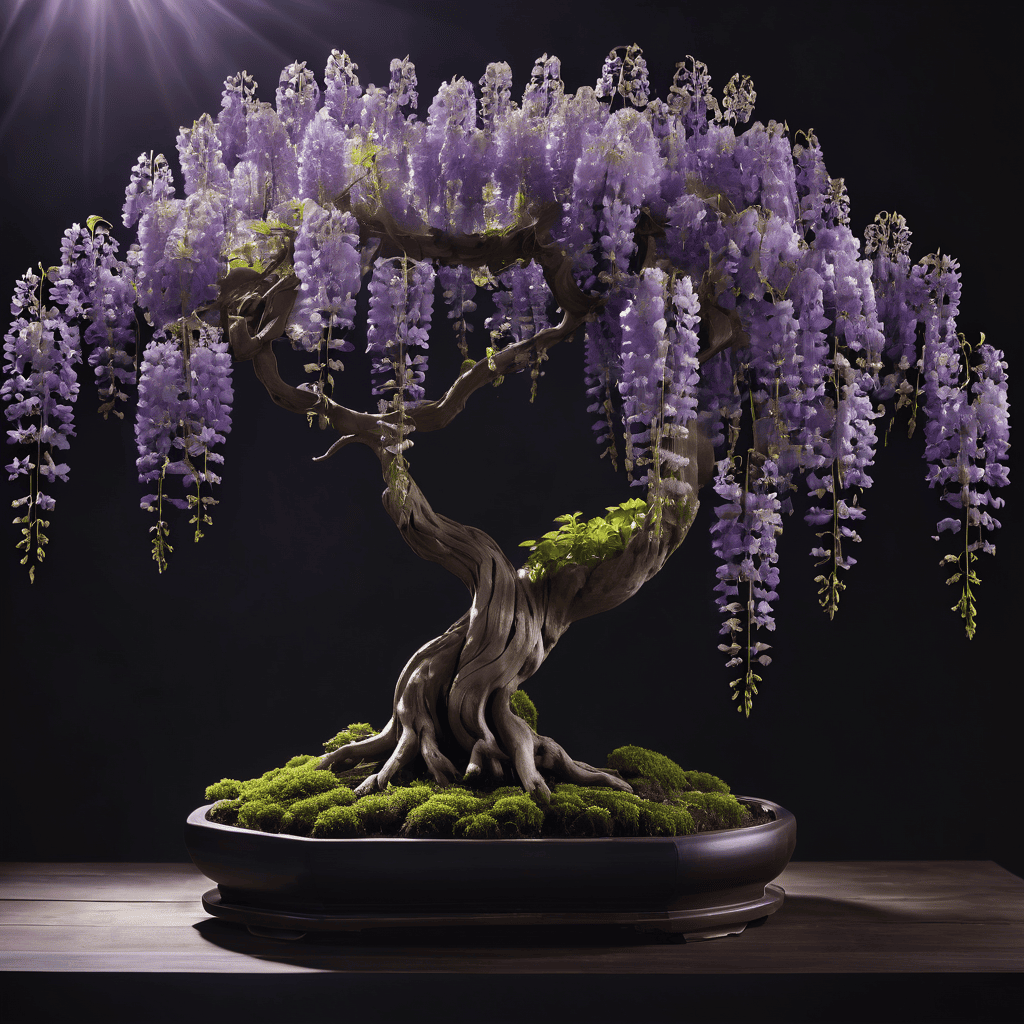
Intro
Entering the world of Bonsai cultivation can seem daunting. But armed with the right knowledge, you can foster growth, beauty, and tranquility in your own Wisteria Bonsai tree. In this guide, we’ll explore the ins and outs of caring for your Wisteria Bonsai, ensuring it flourishes under your attentive care.
Understanding Your Wisteria Bonsai
Think of Wisteria Bonsai trees as pint-sized versions of the full-sized Wisteria trees that grow in the United States, China, Korea, and Japan. They have the same gorgeous purple flowers and unique shape that makes them a hit with nature lovers. But these tiny trees need a little extra TLC to grow and stay healthy.
These little trees love basking in the sun, drinking up water, and growing in soil that drains well. To keep them looking their best, you’ll need to prune, wire, and repot them regularly. It might sound like a lot, but don’t worry – we’re going to break it all down for you in this guide. Let’s dive into the world of Wisteria Bonsai and learn how to make these little beauties thrive!
Finding the Perfect Spot

Choosing just the right location for your Wisteria Bonsai is super important for its growth and overall health. These miniature trees are huge fans of the sun, soaking up those rays with joy. But too much of a good thing can be harmful. While they love sunlight, they also need a bit of shade, especially when the sun is at its peak during the day.
Try to find a spot that gets plenty of morning sun, but also offers some shade in the afternoon. An east-facing location can be perfect for this. Remember, Wisteria Bonsais aren’t great fans of extreme heat, so a place that gets a bit of afternoon shade can help protect them when temperatures rise.
If possible, it’s best to keep your Wisteria Bonsai outdoors. They’re not indoor plants and can have a hard time getting enough sunlight when kept inside. But they also need protection from harsh weather conditions. During winter months, it’s important to shield them from biting winds and freezing temperatures.
So, find that sunny yet shaded spot, keep them shielded from harsh weather, and your Wisteria Bonsai will be set up for success.
Watering Your Wisteria Bonsai
Just like you and me, your Wisteria Bonsai needs water to live and grow. But remember, not too much and not too little. So, how do you know what’s just right for your tree?
The soil in your bonsai pot should be a little bit damp, but never soaking wet. A good way to check is to touch the top of the soil with your fingers. If it feels dry, it’s time to water your bonsai.
But what if you’re still not sure? Here’s another trick: push a chopstick about one inch into the soil and leave it there for ten minutes. Pull it out and check if it’s dry or damp. If the chopstick comes out dry, water your bonsai. If it’s damp, wait a bit before the next watering.
Now, let’s talk about the how. The best way to water your Wisteria Bonsai is from above, just like how rain would fall on it in nature. Use a watering can with a fine nozzle and gently pour water over the soil until it starts to drain out from the bottom of the pot. Don’t stop until you see that happen, that’s when you know the water has reached all the roots.
Keep in mind that the amount of water your tree needs can change. In the hot summer months, your bonsai might need water every day. But in the cool winter months, it may only need water once a week. Also, a growing tree might need more water than an older, established one.
Remember, watering your Wisteria Bonsai is not just a chore, it’s also a moment to connect with nature. Enjoy this peaceful moment with your tree and happy watering!
Pruning and Wiring Your Wisteria Bonsai

Pruning and wiring your Wisteria Bonsai is a bit like giving it a haircut and helping it do yoga! They helps keep your tree looking neat and tidy while also encouraging it to grow in a healthy way. Just like you snip away any split ends from your hair, you’ll need to remove any leaves that are yellow or dead from your tree. You’ll also want to trim back any new shoots to keep your bonsai small and cute.
The best time to do this pruning is right after your bonsai has shown off its lovely flowers. This gives your tree plenty of time to bounce back before the next flowering season.
Now, let’s talk about wiring. Wiring is a cool trick that helps guide the shape of your tree. Imagine you’re helping your bonsai do a yoga pose! You gently wrap the wire around the branches and then bend them to the position you want. But remember, be gentle! You don’t want to hurt the tree by scratching the bark or bending the branches too much.
So, with some careful pruning and gentle wiring, you’ll help your Wisteria Bonsai look its best and grow strong. It’s like a mini spa day for your tree!
The Art of Repotting
Think of repotting your Wisteria Bonsai like moving it into a bigger house. As your tree grows, it’s going to need a little more space to stretch its roots. You’ll notice it’s time for a move when the roots begin to loop around the pot, kind of like a race track.
But how exactly do we go about this repotting business? Let’s break it down together.
First, you’ll gently lift the tree out of its old pot. It’s a good idea to do this on a day when the soil is a bit dry, making it easier to handle. As you take the tree out, be very careful with the roots. They’re sensitive and can be easily damaged.
Next, it’s time for a little root pruning. Don’t worry, it’s not as scary as it sounds! You’re simply going to untangle the root ball and trim back any roots that are too long or too thick. This helps the roots fit comfortably in their new home. Remember to be gentle and avoid cutting too many roots at once.
And now for the big move! Place your tree in its new pot, which should be slightly bigger than the old one. Fill this pot with special bonsai soil that drains well. This kind of soil helps make sure your tree doesn’t get too wet or too dry. Just like Goldilocks again, we’re looking for that ‘just right’ balance.
Repotting might seem like a big task, but with a little patience and a lot of care, you can make the move smooth and stress-free for your Wisteria Bonsai. Just like a hermit crab finding a bigger shell, your tree will appreciate the extra room to grow!
Keeping Pests at Bay
Just like in a real garden, sometimes uninvited critters might visit your Wisteria Bonsai. These little troublemakers can include pests like aphids, scale bugs, and spider mites. These tiny bugs can make your bonsai unhappy by nibbling on its leaves or sucking its sap.
So, how can you tell if your tree has pests? Look out for things like leaves changing color, not growing properly, or even falling off. If you see these signs, it’s time to play detective and find out who’s causing trouble!
If you discover pests, don’t panic! The good news is you can fight them off with a pesticide, which is like a bug spray for plants. It’s important to read the instructions on the pesticide bottle and follow them carefully. This will help make sure you use the right amount to get rid of the pests without hurting your bonsai.
Remember, it’s always easier to prevent pests than to deal with an infestation. Keep your Wisteria Bonsai clean and healthy by following the other care tips in this guide, and you’ll have a much better chance of keeping those pests away.
So, keep an eye on your little tree, take action if you see signs of pests, and you’ll keep your Wisteria Bonsai happy and bug-free! Happy gardening!